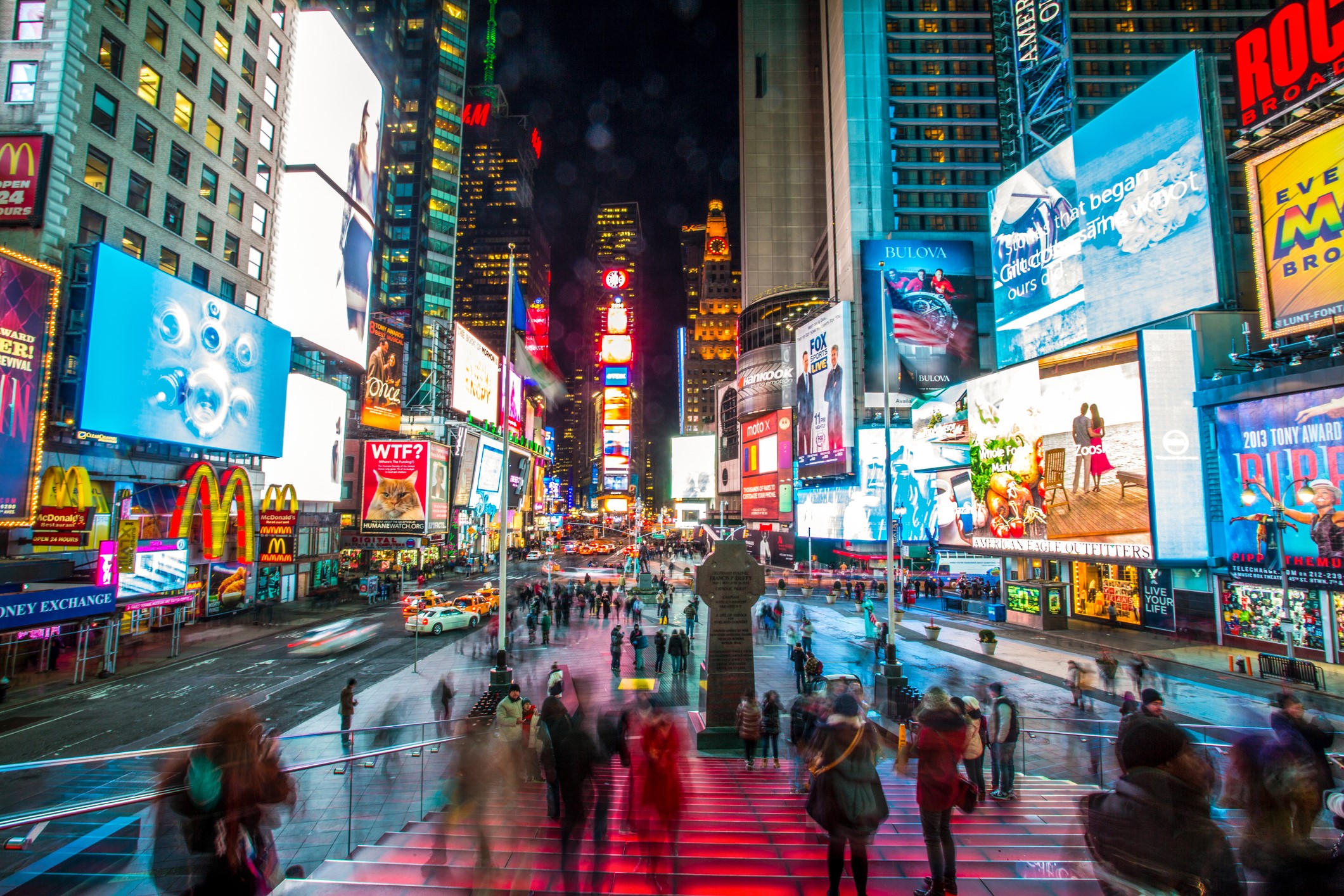Programmatic Boosts Digital Out-of-Home During COVID

While the advertising business was thrown off kilter by the COVID-19 crisis, the out-of-home (OOH) sector experienced a significant silver lining: the rising popularity of programmatic transactions.
"It is invigorating to see that programmatic DOOH [digital OOH] has emerged as the superpower of OOH advertising," said Barry Frey, President and CEO of the trade organization DPAA. "From the first days of the pandemic, programmatic trading demonstrated the needed agility and flexibility of the DOOH medium."
Results in 2021 look bright across the industry. "eMarketer has been charting the aggressive programmatic DOOH growth in the U.S. and projects 2021 at $435 million, almost doubling previous years," noted Frey. "Many in the industry believe the figure will far surpass these estimates."
Intersection, an out-of-home company with a footprint in 18 cities and around 6,000 screens, has experienced significant growth in their programmatic offering. "Our advantage is that we have premium, large format street-facing and transit media that reaches audiences across their daily journey" said Sheri Ham, Intersection's Vice President of Programmatic Partnerships and Sales. "We help brands target their audience and offer measurement tools to help them understand their business outcomes."
Frey sees a big reason why the rise of programmatic occurred during the pandemic. "The industry was able to pause, push and easily move schedules to where desired audiences existed during COVID," he explained. "Now that people are coming back out of home again, the dynamic capabilities to target and indicate attribution are driving OOH advertising to larger portions of the omnichannel media mix. Programmatic is driving digital, mobile, video location and other budgets to OOH on a global basis."
The COVID crisis accelerated the OOH programmatic trend because the foundation was already in place. Clients realized "the flexibility that programmatic affords and the advancements [related to] campaign planning, execution and measurement," Ham said.
She noted that "agencies have had shorter planning cycles, and as a result are turning to the flexibility of programmatic to help them in their planning efforts and to get campaigns activated in a shorter timeframe than they've had in the past." Even though COVID has not disappeared, OOH has become more attractive because more people are spending time in physical spaces," she added.
Despite the advancements, OOH has had its share of skeptics. "There's a perception that there is a lack of ROI in the out-of-home channel," Ham said. "The reality is that there have been improvements across the board for measurement and attribution and that those solutions are now available to brands."
Ham is very optimistic about the future of programmatic DOOH. "We will continue to see expansion across the channel," she said. "There will be more tools available for showing buyers how to precisely reach their target audience."
For the industry, "the measurement tools will continue to advance over the next few years, and we will also see continued expansion and collaboration between out-of-home and digital teams," Ham concluded. "There's an exciting opportunity for TV and video budgets to shift as the industry continues to build out mixed model attribution and measurement tools."
Click the social buttons to share this content with your friends and colleagues.
The opinions and points of view expressed in this content are exclusively the views of the author and/or subject(s) and do not necessarily represent the views of MediaVillage.com/MyersBizNet, Inc. management or associated writers.


